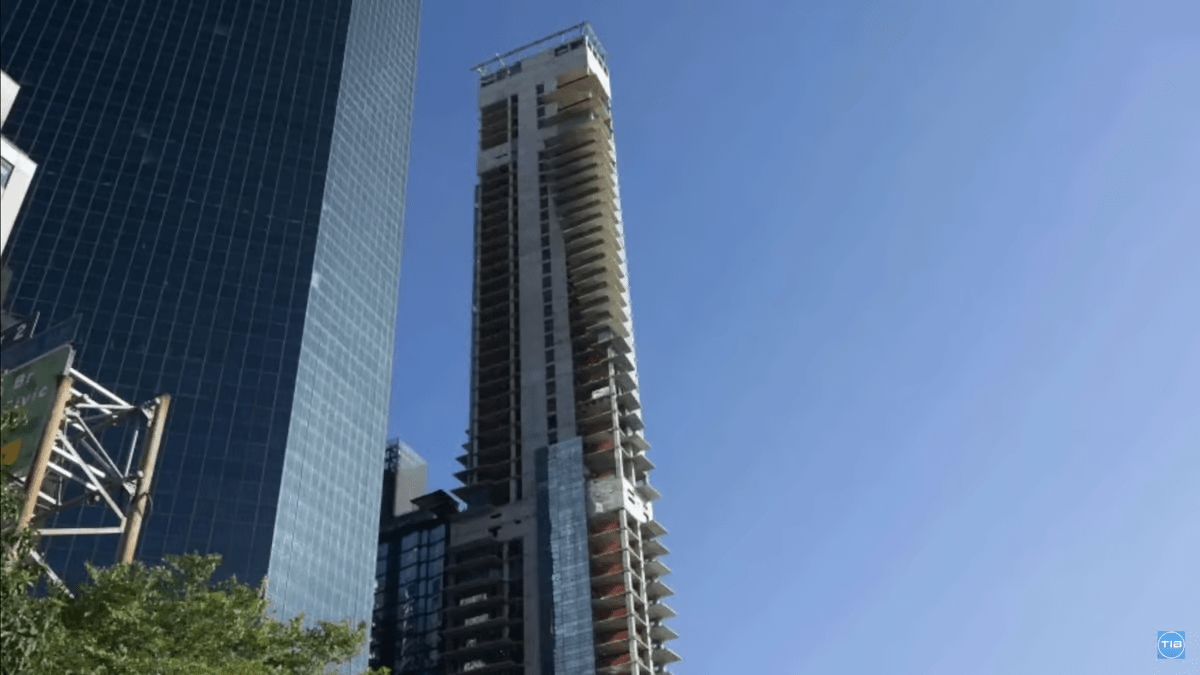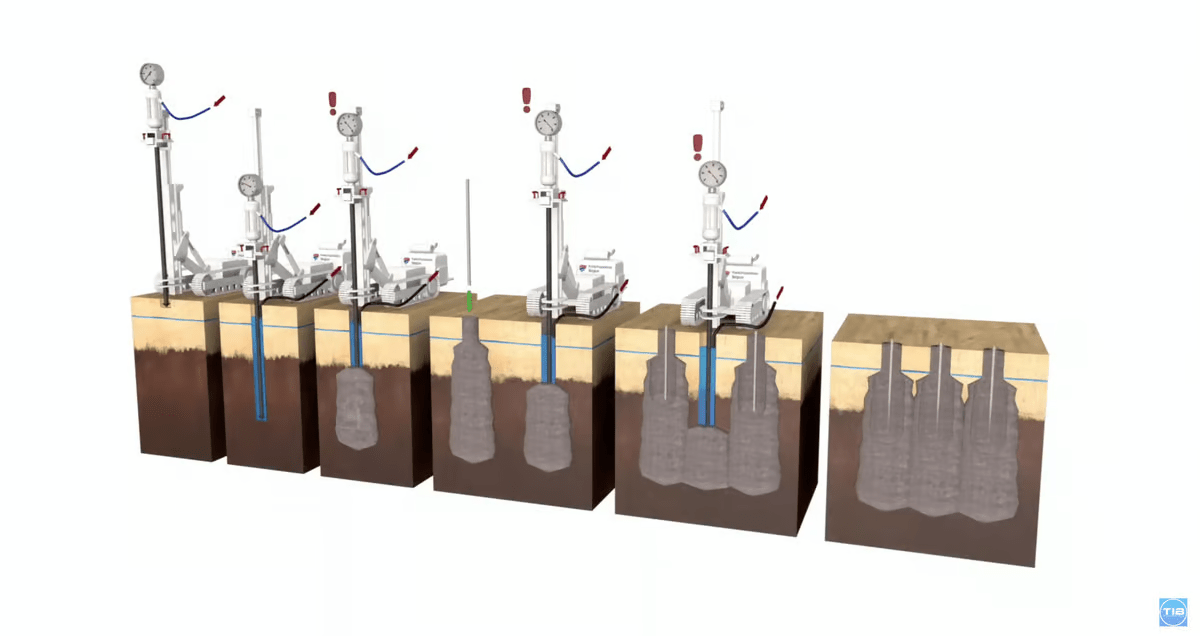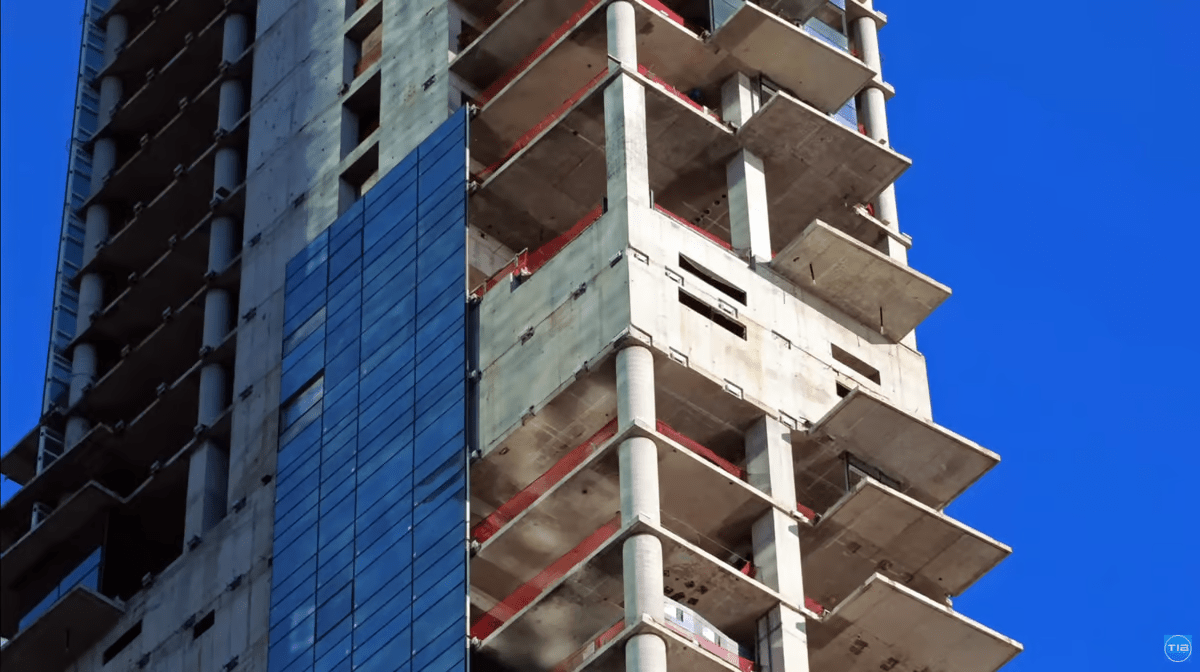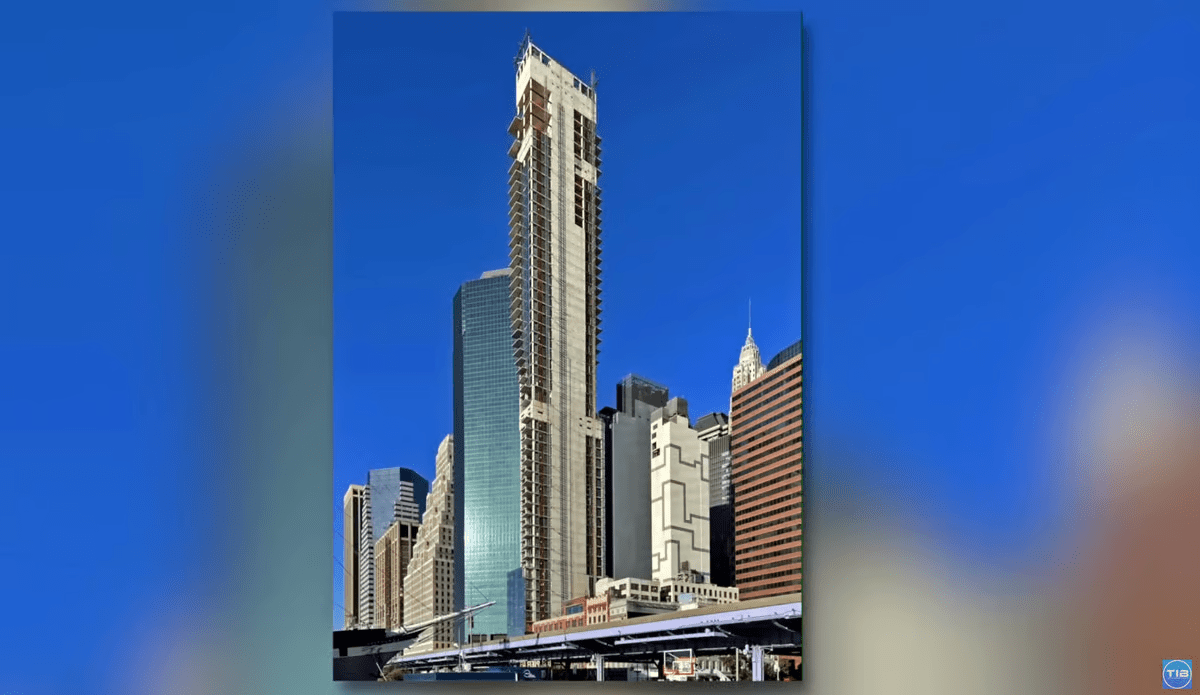161 Maiden Lane was meant to be an architectural marvel. However, instead of becoming a luxury landmark in New York City’s Financial District, it has become infamous as a construction catastrophe, riddled with lawsuits, engineering blunders, and an ever-growing list of financial losses. The structure, now frozen in an incomplete and leaning state, has been described as “banana-shaped,” a testament to the ill-fated decisions that led to its instability.
The story began in 2015 when Fortis Property Group embarked on the ambitious One Seaport project, a $272 million endeavor with 80 high-end residential units, ranging in price from $1.2 million to a staggering $18 million for penthouse suites. While the vision was grand, the execution would prove disastrous.

Skyscrapers in Manhattan typically rely on deep pile foundations, anchoring them securely into bedrock. However, the site at 161 Maiden Lane was built on Colonial-era infill—a precarious mix of sand, gravel, and debris, making it an unstable foundation for a towering structure. Instead of drilling piles down 155 feet into solid bedrock, Fortis opted for a cheaper alternative known as “soil improvement,” injecting concrete into the ground to reinforce it. This decision, aimed at saving $6 million (or roughly 2.21% of the total budget), was met with warnings from engineering consultants who cautioned about “differential settlements”—in other words, the building might lean. Their nearly 100-page report was ignored, and construction pressed forward.

As work continued, problems emerged. New York’s Department of Buildings issued over a dozen stop-work orders due to safety violations. Then, in September 2017, tragedy struck—a construction worker fell from the 29th floor to his death. The contractor responsible for the tower’s concrete superstructure, SSC High Rise, later pleaded guilty to second-degree manslaughter and shut down operations in 2018.
A new contractor took over, only to discover alarming structural issues. Their memo stated, “There are structural issues, unusual settlement… The building is leaning three inches to the north.” Rather than addressing the faulty foundation, an attempt was made to counterweight the structure by misaligning the southern side, making the situation even worse.

By 2019, measurements showed that some floors were as much as 10 inches off-center, with the building continuing to shift. As one lawyer described it in court, “Your Honor, it’s shaped like a banana right now.”
Construction at 161 Maiden Lane came to a standstill in July 2020, leaving an unfinished and uninhabitable shell swaying in the wind—its “sloshing stabilizers,” designed to prevent excessive movement, were never installed. Despite the pre-sale of 71 out of 80 units, buyers have backed out, and some are still fighting to recover their deposits.

The tangled web of lawsuits surrounding One Seaport involves developers, contractors, lenders, and even law firms, all seeking to recover financial damages. While structural engineers, including Ronald Hamburger—the expert who worked on San Francisco’s Millennium Tower—have reassured the public that the building is unlikely to collapse, its future remains uncertain. With over $300 million already invested in this ill-fated venture, it’s only a matter of time before someone takes on the challenge of either correcting or completing this lopsided skyscraper.
For now, 161 Maiden Lane stands as a stark reminder of what happens when cost-cutting and ignored warnings collide in the high-stakes world of real estate development.



NYC never disappoints when it comes to bold architecture! The “Banana” Tower is such a creative (and slightly cheeky) design statement. It’s exciting to see structures that challenge the norm. At Artisticks, we love designs that tell a story—our brass main door handles are handcrafted to bring a bit of that same bold personality to every space. This tower definitely earned a spot on my must-see list!
Only in NYC! The “Banana” Tower is such a fun twist on architectural norms—quirky yet still oddly elegant. It’s a great reminder that even bold, unconventional design has a place in our cities and hearts. At Artisticks, we embrace that same spirit, blending creativity and craftsmanship in our brass main door handles—where every curve and contour is designed to stand out. Love seeing architecture that makes people smile!